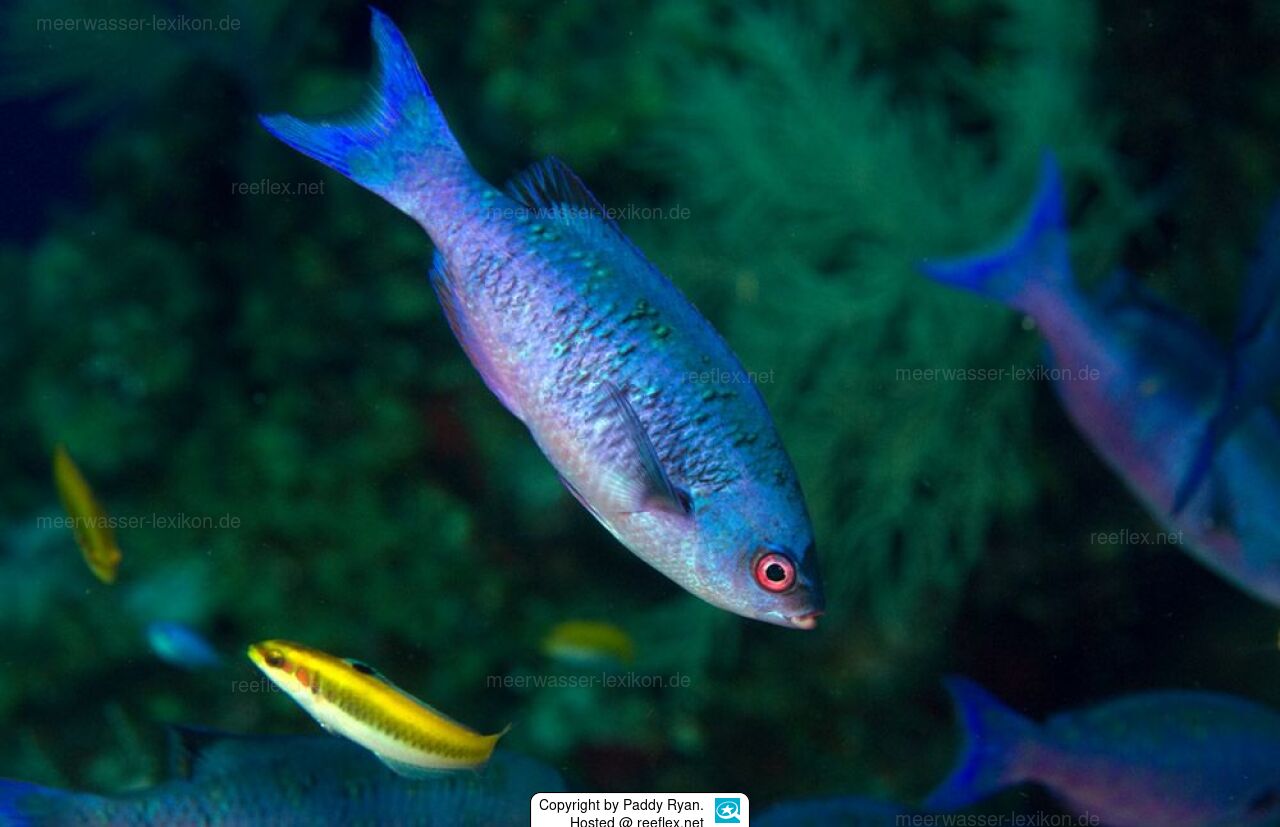Info
Clepticus parrae (Bloch & Schneider, 1801)
Clepticus Parra, also known as Creole wrasse, is found in the western Atlantic from the coast of Florida and Bermuda, including the entire Caribbean south to the northern coast of Brazil. Adult animals often swim in large groups in the outer reef at depths of 10-30 m, juveniles are usually kept together with juvenile Chromis cyaneus between corals. Individually adults are often found together with schools of Chromis cyaneus.
Adult Creole wrasses can be seen in various colors, mainly purple or lilac with a mostly yellow to yellow-purple tail fin, the other fins are usually all yellow. Juvenile animals are predominantly purple or pink dorsally with a series of small spots.
Clepticus parrae are plankton eaters, they feed mainly on copepods, jellyfish, pteropods, tunicates, and larvae.
Unfortunately, occasionally these animals are in trade, although it is known that in particular this type is extremely vulnerable. About 90% of certain animals dont survive during transport. Consequently, those animals should be better left there where they belong, in the Caribbean reefs.
Synonymised names
Brama parrae Bloch & Schneider, 1801 · unaccepted
Clepticus genizara Cuvier, 1829 · unaccepted
Clepticus parrai (Bloch & Schneider, 1801) · unaccepted (misspelling)
Jumping guard
A jumping guard prevents (nocturnal) fish from jumping out.
Wrasses, blennies, hawkfishs and gobies jump out of an unprotected tank in fright if their night rest is disturbed, unfortunately these jumpers are found dried up in the morning on carpets, glass edges or later behind the tank.
https://www.korallenriff.de/en/article/1925_5_Jump_Protection_Solutions_for_Fish_in_the_Aquarium__5_Net_Covers.html
A small night light also helps, as it provides the fish with a means of orientation in the dark!
Clepticus Parra, also known as Creole wrasse, is found in the western Atlantic from the coast of Florida and Bermuda, including the entire Caribbean south to the northern coast of Brazil. Adult animals often swim in large groups in the outer reef at depths of 10-30 m, juveniles are usually kept together with juvenile Chromis cyaneus between corals. Individually adults are often found together with schools of Chromis cyaneus.
Adult Creole wrasses can be seen in various colors, mainly purple or lilac with a mostly yellow to yellow-purple tail fin, the other fins are usually all yellow. Juvenile animals are predominantly purple or pink dorsally with a series of small spots.
Clepticus parrae are plankton eaters, they feed mainly on copepods, jellyfish, pteropods, tunicates, and larvae.
Unfortunately, occasionally these animals are in trade, although it is known that in particular this type is extremely vulnerable. About 90% of certain animals dont survive during transport. Consequently, those animals should be better left there where they belong, in the Caribbean reefs.
Synonymised names
Brama parrae Bloch & Schneider, 1801 · unaccepted
Clepticus genizara Cuvier, 1829 · unaccepted
Clepticus parrai (Bloch & Schneider, 1801) · unaccepted (misspelling)
Jumping guard
A jumping guard prevents (nocturnal) fish from jumping out.
Wrasses, blennies, hawkfishs and gobies jump out of an unprotected tank in fright if their night rest is disturbed, unfortunately these jumpers are found dried up in the morning on carpets, glass edges or later behind the tank.
https://www.korallenriff.de/en/article/1925_5_Jump_Protection_Solutions_for_Fish_in_the_Aquarium__5_Net_Covers.html
A small night light also helps, as it provides the fish with a means of orientation in the dark!







 Dr. Paddy Ryan, USA
Dr. Paddy Ryan, USA




















